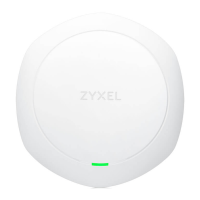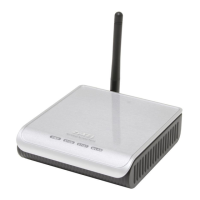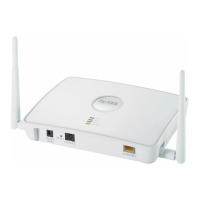Chapter 8 Security
HES-309M Series User’s Guide
108
8.4 DDOS
Use these settings to potentially block specific types of Denial of Service attacks
directed at your WiMAX Device.
Click Security > Firewall > DDOS to open this screen as shown next.
Figure 46 DDOS Screen
This screen contains the following fields:
Table 39 DDOS
LABEL DESCRIPTION
Prevent from
TCP SYN Flood
Select this to monitor for and block TCP SYN flood attacks.
A SYN flood is one type of denial of service attack where an
overwhelming number of SYN requests assault a client device.
Prevent from
UDP Flood
Select this to monitor for and block UDP flood attacks.
An UDP flood is a type of denial of service attack where an
overwhelming number of UDP packets assault random ports on a client
device. Because the device is forced to analyze and respond to each
packet, it quickly becomes unreachable to other devices.
Prevent from
ICMP Flood
Select this to monitor for and block ICMP flood attacks.
An ICMP flood is a type of denial of service attack where an
overwhelming number of ICMP ping assault a client device, locking it
down and preventing it from responding to requests from other servers.
Prevent from
Port Scan
Select this to monitor for and block port scan attacks.
A port scan attack is typicall the precursor to a full-blown denial of
service attack wherein each port on a device is probed for security holes
that can be exploited. Once a security flaw is discovered, an attacker
can initiate the appropriate denial of service attack or intrusion attack
against the client device.
Prevent from
LAND Attack
Select this to monitor for and block LAND attacks.
A Local Area Network Denial (LAND) attack is a type of denial of service
attack where a spoofed TCP SYN packet targets a client device’s IP
address and forces it into an infinite recursive loop of querying itself and
then replying, effectively locking it down.

